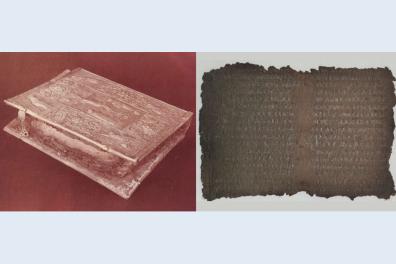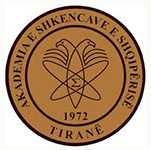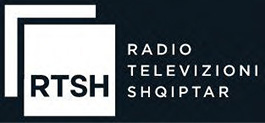Round table "Codex Purpureus Beratinus: the Berat purple manuscripts (Beratinus 1 and 2)", September 30

Organized by the Centre de recherche Europes-Eurasie - CREE (Inalco), the Academy of Science of Albania and the Albanian Radio and Television.
This panel discussion will be followed by the screening, with French subtitles, of Tom Therçaj's documentary: Retour aux codex Beratinus
Friday, September 30, 2022 - 11:00-12:30 - Auditorium
Inalco, PLC - 65 rue des Grands Moulins, 75013 Paris
Codex Purpureus Beratinus: The Berat Purple Manuscripts (Beratinus 1 and 2)
The two Berat Purple Manuscripts, Beratinus 1 (6th century) and Beratinus 2 (9th century), are classified as world heritage on Unesco's "Memory of the World" list. To mark the bimillennium of Christianity in 2000, Beratinus 1, which contains one of the oldest surviving Gospels, was the guest of honor at the Vatican during the days of the exhibition Les Évangiles des Peuples. There are only five other surviving manuscripts in the world: two in Italy, and one each in Greece, France and Great Britain.
Related to the worship of St. John Chrysostom, Beratinus 1 was preserved for several centuries in the church of St. George in Berat, before joining the National Archives of Albania in 1968. But the history of the two manuscripts, Beratinus 1 and Beratinus 2, is intriguing for several reasons. Like a map of global geopolitics, they invite to our conference Albania and Greece, Bulgaria and Serbia, the Normans and the Germans, by way of the Ottoman Empire, that of Austria-Hungary and, of course, China.
But, where do they come from? Who were the copyists? The guardian angels and the evil angels? By scrutinizing the confused radiance that the mysterious treasure has been sending back to us since the end of antiquity, our speakers will take stock of the long journey of the two manuscripts, emphasizing the importance of this heritage for the world of yesterday and today. Complementing this, the quality of director Tom Therçaj's documentary film (with French subtitles), which will be screened following the conference, will help us outline a formidable journey through time.
.

